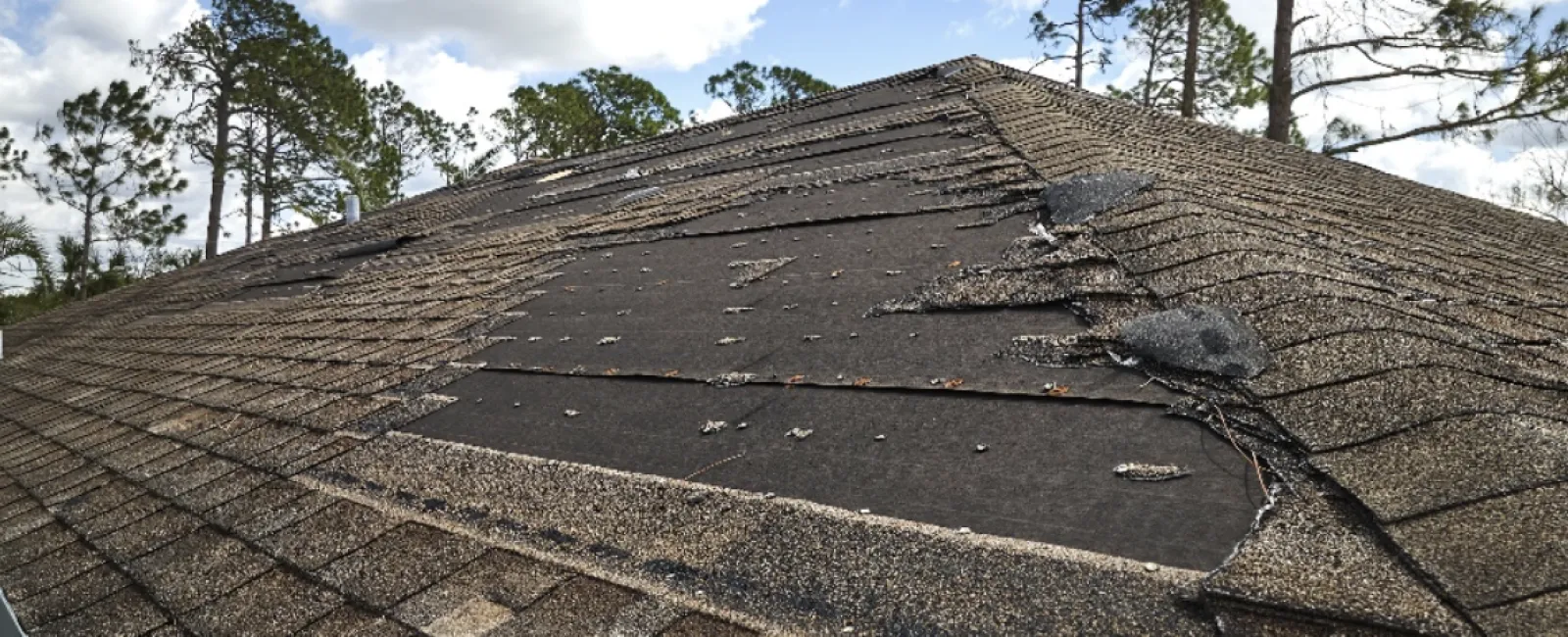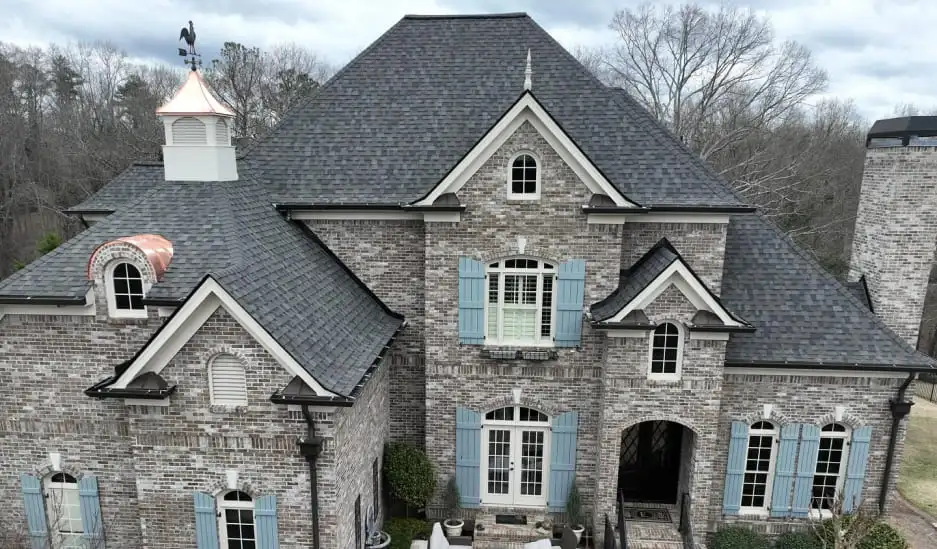Roof life expectancy is important to consider when planning for your home’s maintenance and future costs. While a roof’s lifespan can vary depending on various factors, such as the material used, weather conditions, and proper maintenance, understanding the average roof life expectancy can help you make informed decisions. And if well-taken care of properly, you can expect your roof to last at least 15 years.
What Factors Impact Roof’s Life Expectancy?
Roofing materials are the most important factor in determining how long your roof can last. Roof life expectancy varies from material to material. Where a slate roof can last over 100 years, an asphalt shingle roof will last up to 30 years.
However, some common factors are:
- Proper ventilation: Adequate ventilation helps prevent damages like cracks on roof shingles, ice dams, moisture buildup, mold, rot, etc., and prolongs your roof life
- Installation quality: A well-installed roof will have fewer issues and last longer
- Climate and weather conditions: Extreme heat, cold, wind, and heavy rainfall can accelerate roof deterioration
- Regular maintenance: Routine inspections and repairs can detect minor issues before they become serious problems
- Roof slope and design: Steeper roofs shed water more effectively, reducing the risk of leaks and water damage. With a well-maintained higher pitch roof, it lasts longer than flat or low slope roofs with poor maintenance
- Roofing material: Different materials have varying lifespans, with some lasting significantly longer than others
- UV exposure: Over time, exposure to the sun’s ultraviolet rays can cause roofing materials to degrade
- Roof color: Lighter-colored roofs reflect more sunlight and can help keep the underlying structure cooler. While darker roof colors often cause problems like overheating, cracks on roofs and tiles, and poor ventilation
Roof inspection allows you to spot and fix problems before it’s too late. And we recommend checking your roof at least once a year – especially after a storm.
What Is the Lifespan and Effects of Different Material Roofs?
Choosing the roof material is crucial for the longevity and performance of your roof. Different roofing materials offer varying lifespans and come with unique effects. Here are some key insights into the lifespan and effects of various roofing materials:
- Asphalt Shingle Roofs: Asphalt shingles are the most used roof shingles as they are affordable and have a lifespan of 15 to 30 years. Asphalt is usually used as a coating on fiberglass or organic base, which offers strong protection against UV rays, wind, and rain. However, asphalts aren’t the best option for wet or humid regions, as humidity easily damages them.
- Wood Shingle Roofs: Typically, cedar is used for wood shingles as it is resistant to rot and insects. Since wood is a natural-derived material, it needs proper and regular maintenance every year. With well-maintenance, your wood shingles can last about 15 to 30 years. While wood shingles don’t require costly installation, it’s more susceptible to damage like warped or split shingles, discoloration, and fire.
- Clay Tile Roof: Installing clay tiles can be expensive as it requires the intervention of professionals. Despite the price, it’s a durable and low-maintenance option. They are best suited for hot sunny climates where asphalt shingles get softened easily.
- Metal Roofs: The cost and longevity of metal roofs depend on their thickness. The high-end metals are thicker (22 to 24 gauge), more durable, and ideal for the northern regions. The cheaper options are thin metals (26 to 29 gauge) which might last up to 20 to 25 years.
- Slate Tile Roof: Slate tiles are great for making a fireproof roof; they are highly durable against natural forces and can last from 50 years to a lifetime. Slate tile roofs are easy to repair, but installation requires skilled roofing professionals. Also, slate tile roofs can’t be placed on standard roof framing.
- Solar Roofing Tiles: Solar roofing tiles are often used as an alternative to solar panels because they look better. However, they are costly and produce less energy than standard solar panels. Replacing single tiles is easy in solar roofing, and they usually come with a 30-year manufacturer guarantee.
Maximize Your Roof’s Life Span
You can easily maximize your roof’s life span by taking a few important measures. Ensure the gutters stay clean and unclogged so there’s little chance of water damage. Leaves trap moisture and damage your roof, so remove them. Also, snow can damage your roof, so it’s best to clean snow with a roof rake. Finally, don’t let moss and mold damage your precious roof. And if you need more comprehensive care, hire professionals.
Choosing the perfect roof within a budget is a challenging task. If you’re looking for the most seasoned team of roofers in Atlanta, check out Findlay Roofing. We’ve been offering a range of roofing consultations and services since 1995.
At Findlay Roofing, we take pride in delivering quality workmanship. As a leading Owens Corning Platinum Preferred Contractor, BBB-accredited, and member of the NRCA, we ensure our customers’ satisfaction. With full insurance coverage and a lifetime Leak-Free Warranty, we don’t take payment until we fulfill our promises. So, call us today to schedule a consultation and take the first step towards a durable and beautiful new roof.



